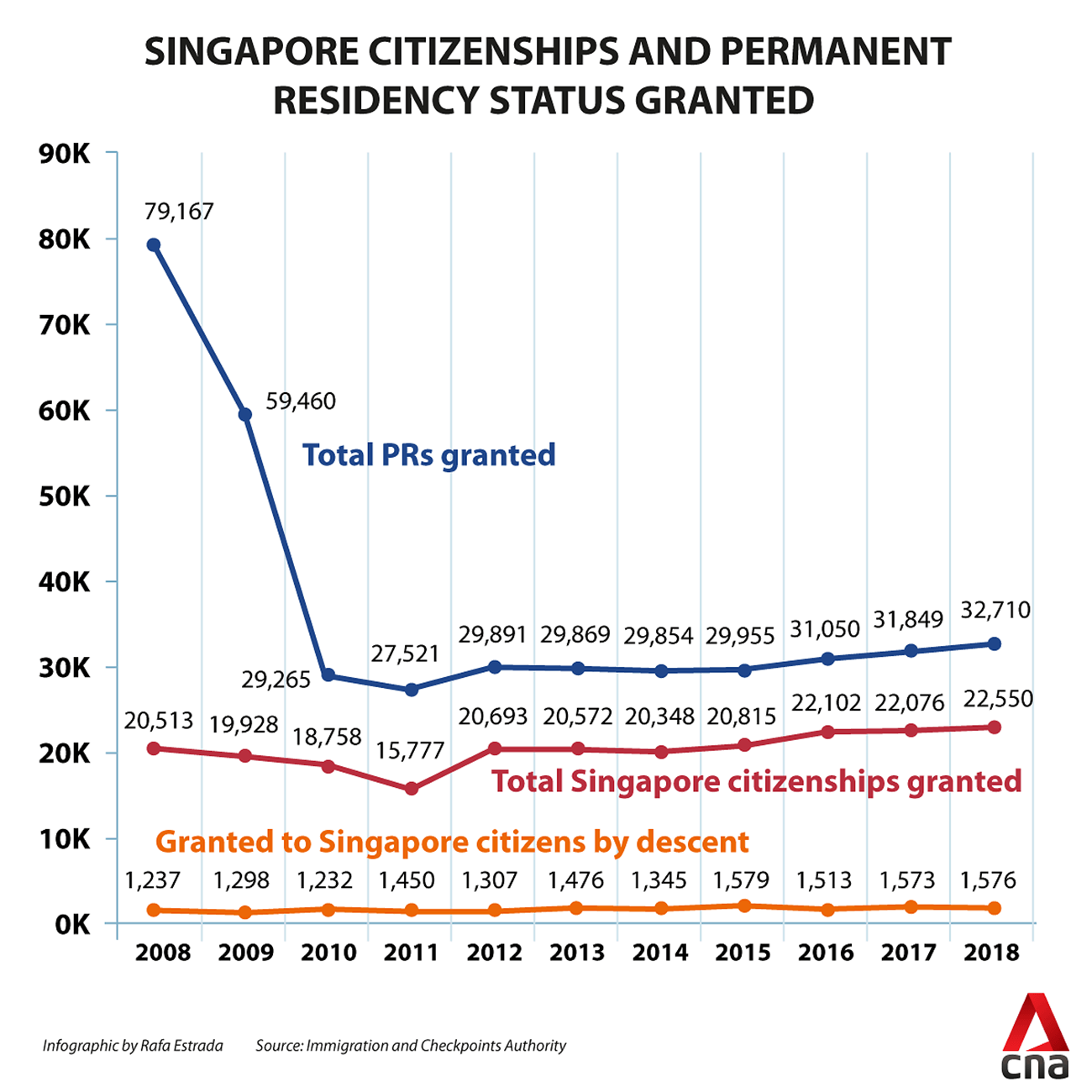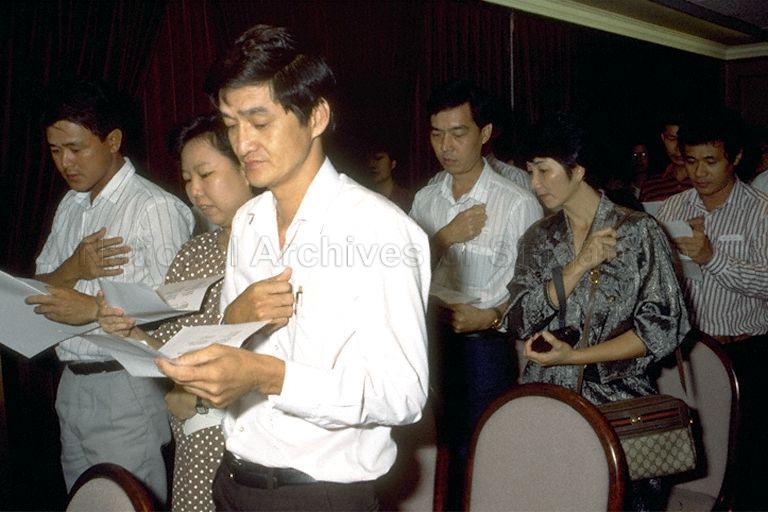Integrating New Citizens
Integrating New Citizens
What bonds us as Singaporeans is not how we look, but the way we behave, our values and the norms we uphold. This can be challenging for new citizens who may have to change the way they would normally act and interact with others
As of June 2019, there were 3.5 million Singapore citizens, an increase of 0.8 per cent from the previous year. There were 22,550 new citizens in 2018, up from 22,076 the year before. The majority (61.6 per cent) were from Southeast Asian countries, with 32.4 per cent from other Asian countries and 6 per cent from countries outside Asia.
 Image: CNA, taken from this article.
Image: CNA, taken from this article.
To help new citizens adapt, the National Integration Council (NIC) was set up in April 2009 to promote integration through ground-up projects. Among more than 280 initiatives the council has funded are Singapore heritage visits, organised by the Singapore Federation of Chinese Clan Associations, as well as a short film – #WhyBeTowkayTan – about a kopitiam runner from China who spends Chinese New Year Eve with co-workers.
In 2011, the NIC developed the Singapore Citizenship Journey, consisting of interactive online modules on topics such as Singapore’s history and culture, national symbols and national policies, and experiential learning programmes such as visits to museums. The mandatory programme also includes community sharing sessions where new citizens meet residents and grassroots leaders from their constituencies.
Each year, a National Citizenship Ceremony is held in conjunction with the National Day celebrations, where new citizens receive their pink NRICs and citizen certificates. Citizenship ceremonies are also held every three months or so in group representation constituencies (GRCs) across the island, aimed at fostering a deeper sense of belonging among new citizens.

 (Images: National Archives of Singapore)
(Images: National Archives of Singapore)
Often, new citizens have lived in Singapore for years, initially coming to the country in search of better career prospects or to study, but later finding themselves attracted to the way things are done in Singapore.
Software engineers Nguyen The Huy, 33, and Tran Thi Tuyet Mai, 33, who became new citizens after working in Singapore for a decade or so after graduating from the National University of Singapore said they were attracted to the education system here. “We appreciate the diversity in the system and believe it will help our children gain a broader perspective of the world,” said Mr Huy.
But while most Singaporeans accept that immigration is important, many also feel that immigrants can do more to integrate into society. An Institute of Policy Studies (IPS) survey of about 4,000 Singapore citizens and permanent residents, released in 2019, found that about nine in 10 felt that it was good to have people of different nationalities living in the same neighbourhood, and that they can learn a lot from the immigrants’ cultures. However, more than six in 10 said immigrants are not doing enough to integrate into Singapore.
A major stumbling block that was identified during dialogues with the survey participants, however, is the limiting beliefs and perceptions about each other due to stereotypes, fear of rejection and lack of trust, said then-Minister for Culture, Community and Youth Grace Fu at a National Integration Council convention on 3 August 2019.

Hence, MCCY is looking for ways to partner and involve more parts of Singapore’s society, starting with a workgroup with Singaporeans to help shape the curriculum of the Singapore Citizenship Journey.

